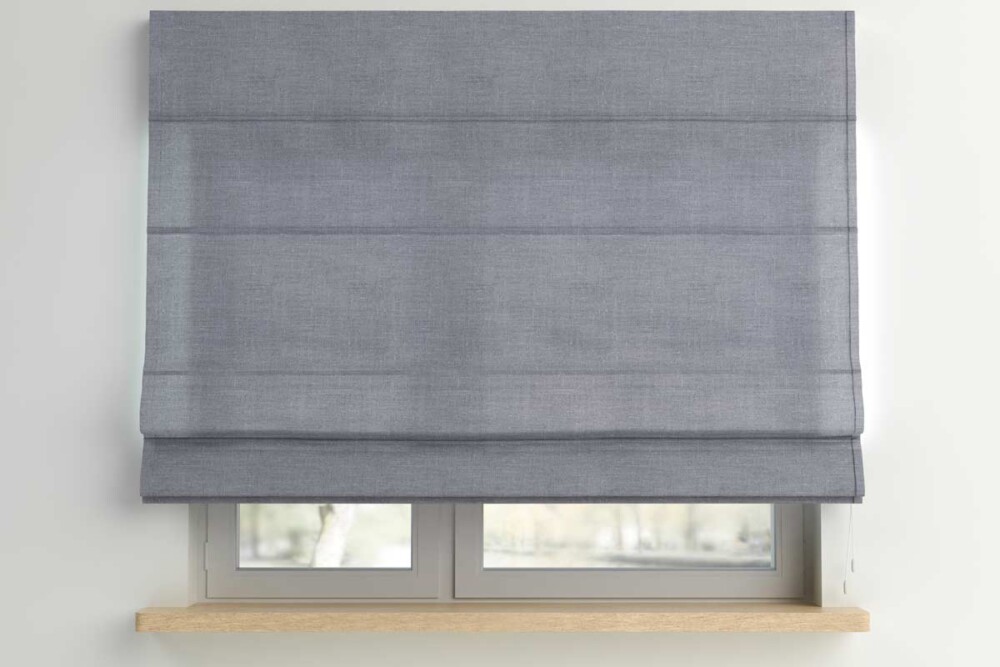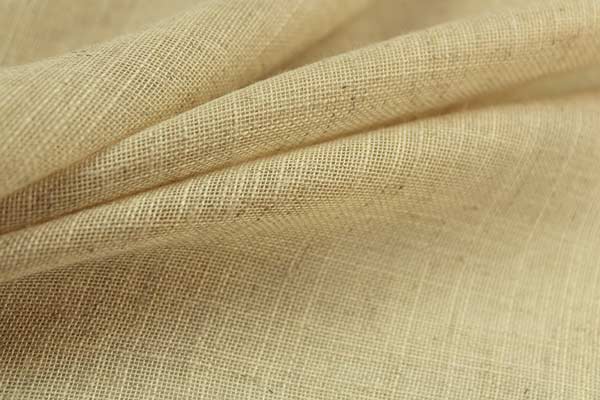Packet blinds are a versatile and chic option for decorating any home space, from the living room to the kitchen. With their practical and clean design, they are an ideal choice for those who want to control light while enhancing the aesthetics of the room. Cimmino has compiled a step-by-step guide for those who want to try their hand at DIY creating custom packet curtains, from materials to assembly.
Roman blinds: features and advantages
Packet curtains are distinguished by their simple and functional structure, which allows the fabric to be gathered into horizontal folds by a system of cords. This type of tent offers several advantages:
- Light adjustment: the packet curtains can be raised or lowered according to the amount of light desired.
- Space optimization: compared to traditional blinds, these take up less space because they fit perfectly into the glass or window frame.
- Stylistic versatility: available in a variety of fabrics and colors, packet curtains fit any decor style, from classic to modern.

Materials needed to make do-it-yourself packet curtains
Before you start sewing, it is essential to get all the materials you need. Here is what you need:
- Fabric: choose drapery fabric based on desired transparency and texture.
- Splints: to support folds and ensure a neat effect.
- Lanyards and rings: the mechanism for raising and lowering the tent.
- Curtain track or curtain rail: for mounting on the window frame.
- Fabric scissors: for clean and precise cutting.
- Metre and ruler: essential tools for accurate measurements.
- Iron: useful for preparing the fabric before stitching.

How to choose the ideal fabric for packet curtains
The choice of fabric for modern packet curtains is crucial to achieving the desired effect. Consider these aspects when selecting the perfect fabric:
- Thickness: for a very bright room, a thick fabric such as linen or heavy cotton can help filter light, creating a cozy atmosphere.
- Transparency: for rooms where more natural light is desired, opt for lightweight fabrics such as voile or semi-transparent cotton.
- Ease of cleaning: for rooms such as the kitchen, choose materials that are easy to wash and resist stains well.
- Color and pattern: select shades that match the rest of the decor. Keep in mind that light curtains will give a more airy feel to the space, while dark colors will create a more collected and sophisticated atmosphere.
The best fabrics for packet curtains
When choosing fabric for packet curtains, it is important to opt for materials that enhance natural light and match the style of the room. Here is a selection of ideal online fabrics that combine aesthetics and functionality.
Curtain Linosa
The Linosa Curtain is a 100% polyester fabric with a refined linen effect, available in shades of white, beige and gray. With its height of 300 cm, it is perfect for covering wide windows without seams. The lightweight yet durable material ensures long life and excellent light management.

The polyester used makes the fabric easy to clean and durable, making it ideal for home spaces that require practicality without sacrificing elegance.
Curtain Maiori

The Maiori Curtain fabric is an elegant polyester with a height of 310 cm, ideal for those looking for a versatile and durable solution for packet curtains. Its lightweight construction, combined with the strength of polyester, offers excellent durability and ease of cleaning, making it a practical choice for home environments.
The color palette of the Maiori Curtain includes neutral, natural tones that are perfect for adapting to any decorating style, while providing light management that creates a soft, welcoming atmosphere.
Curtain Nevada
Nevada curtain fabric is a versatile choice, ideal for both classic and modern furnishings. Made of 100 percent polyester and available in a width of 300 cm, it offers a soft, fluffy finish perfect for rooms that require a touch of elegance without being overly formal. Color options range from natural, solid and striped tones.

Because of its strength and light weight, Nevada Curtain is perfect for packet curtains in any room of the house.
Curtain Alabama

Alabama Curtain fabric features a polyester banded structure, ideal for creating curtains that stand out for their elegance and softness. With a height of 300 cm, the fabric offers even coverage and is perfect for both modern and traditional settings.
The Alabama Curtain is available in natural colors, which give a fluffy and refined effect while maintaining good durability due to the polyester composition.
Grenoble tent
Grenoble curtain fabric is a high-quality choice for packet curtains, ideal for those who want effective coverage with a sophisticated aesthetic. Composed of 100 percent polyester, it offers a soft hand and an opaque finish. With a height of 310 cm and featuring lead for extra weight and linear fall, it is perfect for adding an elegant touch to rooms.

The Grenoble Curtain is available in light colors and features a solid weave that matches a variety of styles, giving a bright but reserved atmosphere.
Linux curtain

Linux Curtain is a refined combination of polyester (70 percent) and linen (30 percent), perfect for those who want a natural effect without sacrificing the durability and ease of maintenance of polyester. At 300 cm high and weighing 100 gsm, this fabric features a plain weave and elegant fall, ideal for enhancing packet curtains in modern or traditional settings.
The presence of linen gives a sophisticated look, while polyester provides durability while maintaining a bright and welcoming environment.
Steps to take measurements and prepare for cutting fabric
Before cutting the fabric, it is essential to take accurate measurements to avoid waste or mistakes:
- Measure the width of the window: add a few inches for the side margins to ensure optimal coverage.
- Determine the height of the curtain: measure the length from the top of the window to where you want the curtain to reach when it is lowered.
- Calculate extra for pleats: leave enough room to create pleats and make sure the fabric does not remain taut when the curtain is raised.
- Mark the measurements on the fabric: use a chalk to mark the cutting point, making sure it is straight and parallel to the edge.
Once all measurements have been taken, cut the fabric along the marked lines and iron it to remove any creases, making it easier to sew.

How to sew the folds of a packet curtain
Horizontal pleats are what make a packet curtain unique. Here’s how to make them easily:
- Fold the fabric into regular sections: decide the width of each fold (e.g., 15-20 cm) and mark the fold points.
- Insert slats: sew small loops along the fold lines to insert slats, which will give structure to the tent.
- Add lanyard loops: attach small loops to the back of the fabric at each fold. Pass the lanyards through these loops for the opening mechanism.
- Sew the bottom edge: ensures a firm closure to prevent fraying and a neat final effect.

Installing packet curtains: how to fix the rail and guides
Attaching packet curtains requires precision to ensure that they work properly. Here are the steps to secure them effectively:
- Install the track: follow the manufacturer’s instructions to attach the track above the window or directly to the frame.
- Hook guides: cords must pass through side guides to keep the tent straight and stable.
- Check the mechanism: make sure the curtain raises and lowers smoothly, adjusting the cords if necessary to achieve a smooth movement.

Style tips: customize packet curtains with slats, colors and accessories
Customizing packet curtains allows you to add a unique and distinctive touch to your home. Here are some ideas for making your curtains stand out:
- Decorative slats: choose slats made of special materials, such as wood or metal, to give an elegant and modern look.
- Colors and textures: dare with bright colors or geometric patterns for a contemporary look, or go for neutral tones for a minimalist environment.
- Accessories: the use of small tassels or curtain clips can give a sophisticated touch, while decorative cords add a personalized and refined detail.
With a little creativity and the right choices of materials, do-it-yourself packet curtains can turn into a unique and functional decorative element for any room. Making them requires care and precision, but the end result will be a custom-made curtain that perfectly reflects your personal style and enhances your home.



